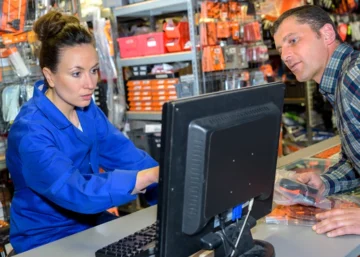
Brake systems are among the most critical vehicle-safety components, making their maintenance incredibly important. Whether you’re a DIY enthusiast or a professional, the ADVICS team of experienced techs are here to offer tips to help keep your – or your customers’ – brake systems in tip-top shape.
Routine Inspections
As a DIY-er, routine inspections tend to be more informal. Whether it’s your vehicle or someone else’s, you’re likely aware of any brake system concern, which will prompt an inspection. Additionally, it’s good practice to inspect your vehicle’s braking system every six months, especially if you engage in everyday driving, and even more often if you’re pushing your car beyond regular use.
As a technician, performing thorough brake inspections for your customers is crucial, going beyond just addressing the primary concern that brought them to your shop. Additionally, it’s important to communicate to customers the importance of having their brake system inspected at least every six months to ensure safety standards are met.
Monitoring Brake Fluid Levels
One of the first checks on your maintenance list should be to monitor brake fluid levels.
A note for DIY-ers: Brake fluid is stored in the brake master cylinder reservoir. If you find that brake fluid levels are low, this may indicate a leak. If this is the case, it’s possible that the brake lines may need to be replaced. Before replacing or refilling fluids, it’s important to determine which brake fluid is right for your vehicle.
Always select the appropriate DOT-rated fluid for your vehicle, and always consider the quality of the brake fluid you choose. Both DIY-ers and techs can benefit from using ultra-premium brake fluids, which are designed and tested to meet rigorous OEM standards. This ensures the safest and most consistent stopping performance.
Maintaining Brake Pads and Rotors
Pads and rotors play a vital role within the braking system, so their maintenance should never be overlooked. For both DIY-ers and professionals, maintenance begins with a visual inspection. Start by checking brake pad thickness to ensure the friction material protrudes beyond the length of the pad wear indicator or use a brake pad wear gauge. You will also want to check to ensure the friction material is wearing evenly. Friction material that is wearing unevenly could indicate issues with other components in the brake system. However, since brake pads vary, be sure to review the manufacturer’s standards.
When inspecting rotors, keep an eye out for warning signs such as grooves, cracks or scoring, which indicate the need for replacement. At ADVICS, our techs always recommend replacing brake pads and rotors at the same time to ensure optimal safety and stopping performance.
Assessing Irregular Noises
Your vehicle will often “tell” you when there’s an issue – especially when it comes to brakes. Do you hear squeaking or squealing noises? Grinding? Those are the first signs of a problem. Let’s unpack what those sounds might mean below.
- Squealing Noises
Squealing during a braking event could be a result of a pad wear indicator that is worm down to the point at which it is contacting the rotor. Delaying maintenance leads to additional – and often costly – brake system replacements and can cause further damage. - Grinding Noise
Grinding sounds may suggest that the brake pad friction material has worn down to the point where the backing plate is exposed and contacting the rotor during braking events. In this scenario, the rotors and calipers are at risk due to metal-on-metal contact and generation of excessive heat. Replace these components ASAP.DIY-ers – It’s crucial for your safety and of those around you to replace the brake pads and assess the need for any additional part replacement. Pros- remember to communicate this concern to your customers, and explain which components require immediate replacement.
The Bottom Line
Brake system maintenance is similar for both DIYers and pros: to ensure that vehicles stop safely and effectively, for the safety of everyone on the road. Whether you’re in the shop or at home, this simple checklist can help ensure you’re covering all the necessary points of inspection and making the appropriate repairs.



